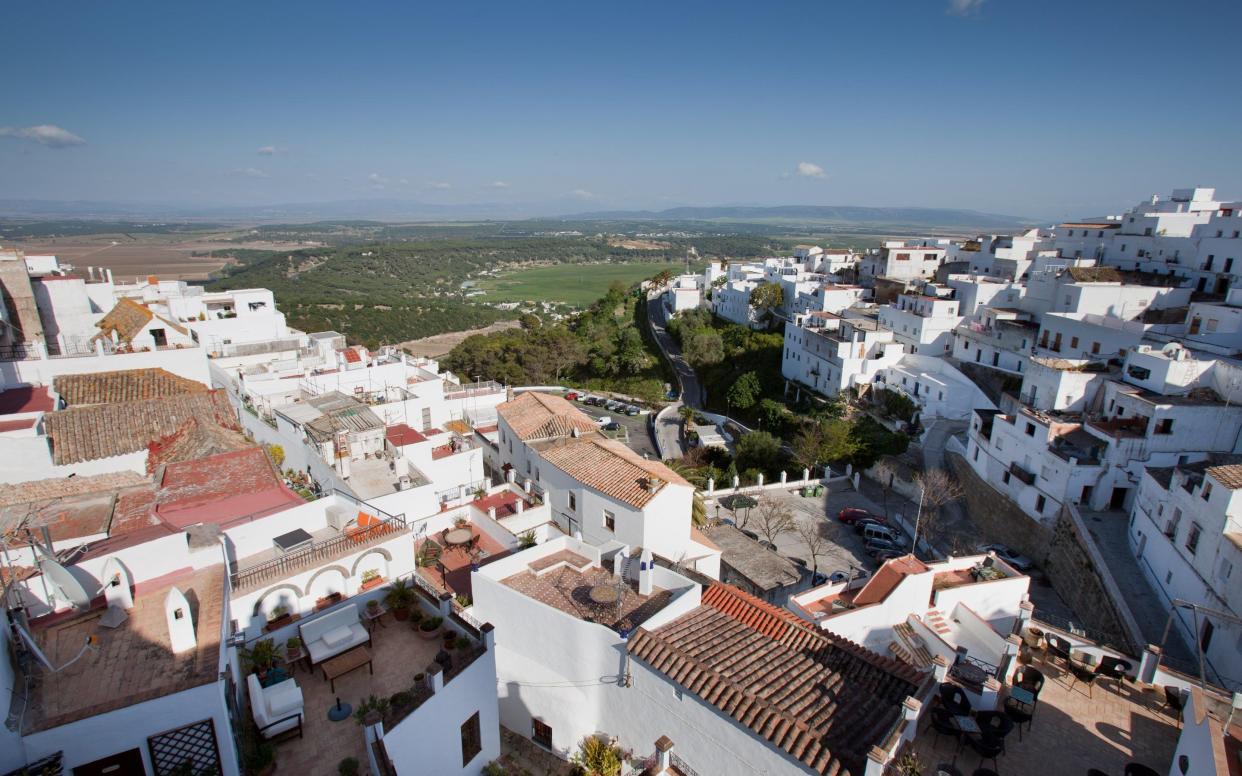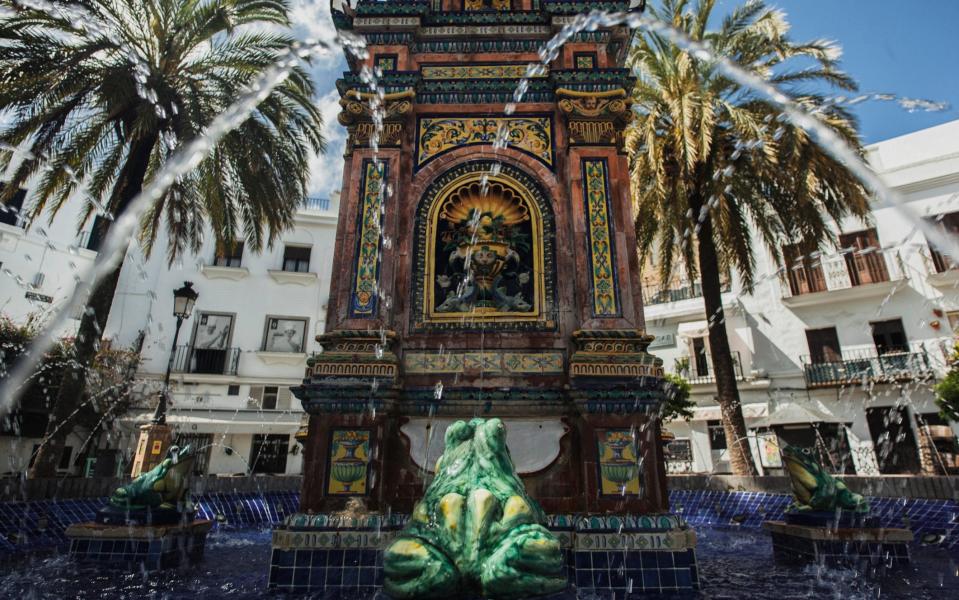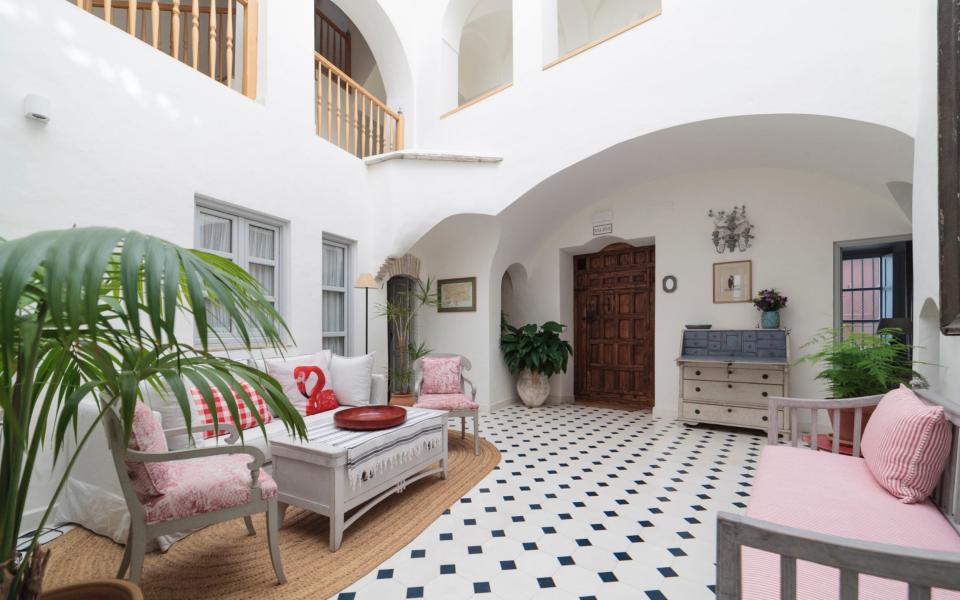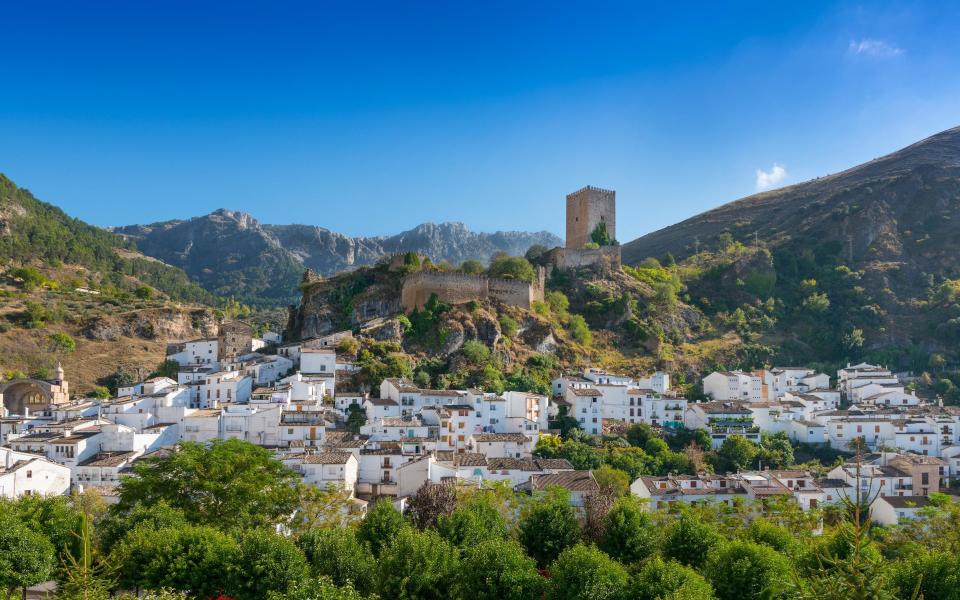Is this Andalucia’s most charming hill town?

On clear days, the morning sun casts a rosy glow over the whitewashed houses of Vejer de la Frontera. Far away in the distance – beyond the green fields, the pale-blonde beaches of the windswept Costa de la Luz and the glinting Barbate wetlands – you might just make out Morocco looming across the Strait of Gibraltar. Its influence has helped shape the ancient hilltop town of Vejer, one of Andalucia’s most charming pueblos blancos (white villages), which in recent years has become a sizzling hub of creativity.
I grew up in southern Andalucia. Since childhood family trips to the Costa de la Luz, I’ve seen Vejer morph from a little-visited pocket of Cadiz province into one of the most exciting places in southern Spain. Ambitious boutique lodgings are now rubbing shoulders with forward-thinking small-scale wineries rooted in gaditano flavours.
Independent shops are showcasing subtly reimagined Spanish crafts, and family-owned restaurants are experimenting with fresh local produce. As Andalucia begins to emerge from Spain’s most recent Covid-19 lockdown, local businesses are tentatively looking ahead to the summer.
A web of blinding-white streets fans out from the Plaza de España and its slender palms to Vejer’s Moorish-era castle. The Gothic-Mudéjar church, like so many others in Andalucia, stands on the site of an old mosque. The town passed through Phoenician, Roman and Moorish hands, and sat for years on the tumultuous border between Islamic and Christian Spain.
Today’s Vejer, with its distinct charm, brings a change of view and pace from its Costa de la Luz neighbours. Recent years have added a fresh layer of design, style and luxury, in the form of intimate boutique hotels and creative restaurants breathing new life into old-town buildings.
It was this fusion of tranquil Andalucian hill town with influences of Morocco and remnants of Moorish architecture that drew James Stuart, the Scottish owner of the pioneering Califa Vejer properties, here on his travels through rural Spain in the late 1980s – originally by accident, on the hunt for a bite to eat after surfing at nearby Caños de Meca while staying in Tarifa.

Stuart returned to Vejer a year later, set up a mountain-biking holiday company, and eventually rented out a few B&B rooms in his own home, which morphed into La Casa del Califa, Vejer’s original boutique bolthole. La Casa del Califa has grown up to become one of Andalucia’s most fabulous destination hotels, occupying a cluster of interlinked 16th-century houses, with a terrific North African-Middle Eastern restaurant, a strong sustainable ethos and sections dating from the 10th century.
The town’s most hotly anticipated arrival was the Califa team’s recently opened Plaza 18, an 1890s merchant’s house (built from a 13th-century home) recast with elegant, global-inspired interiors by London designer Nicky Dobree.
Now Stuart and his business partner Regli Alvarez have a handful of properties and restaurants, including Las Palmeras del Califa next door, refurbished by the Scottish interior designer and restaurateur Ellie Cormié (who also runs Vejer’s successful Corredera 55 restaurant); Califa Casas, a collection of stylish self-catering homes expanded in 2021; and a centuries-old building that is currently being converted into a soothing hammam.
“Creativity is all around us in Vejer,” says Cormié, “in the form of palm-filled patios, arches, stonework and the soft-toned doorways scattered through the cobbled streets of the old part of town. The colourful sevillano tiles that have lasted through time hint at the houses passed down through generations and give a wonderful colour palette to work from. I’ve used these tones, working with local craftsmen, to create the looks for Corredera 55, all enhanced by the sharp, clear light of the Costa de la Luz.” And there is plenty more.
At the chicly converted 18th-century townhouse Casa Shelly, its Swedish-British owner, Chris Pettersson, has gone for a Scandi-Andalucian guesthouse look, courtesy of Seville-based designer Amparo Garrido. La Fonda Antigua is another delightful village home turned boutique bolthole, envisioned by jerezana sherry maker Eugenia Claver. Hotel V, meanwhile, brings an arty edge to a 17th-century mansion revitalised by Belgian hotelier Jean van Gysel.

It’s not just about design: Vejer has also grown into one of Andalucía’s gastronomic highlights. Adopted vejeriega (and chef-and-sherry expert) Annie Manson is originally from Scotland and runs terrific cooking courses, as well as food, wine and sherry tours of Cádiz province at her lovely old townhouse (Annie B’s Spanish Kitchen, four-night course with accommodation £1,220; anniebspain.com).
She explains how the food scene here is fired almost entirely by locally produced ingredients of outstanding quality, from exquisite olive oils and payoyo goat’s cheese made in Grazalema to the passing Atlantic bluefin tuna caught using the ancient almadraba method introduced by the Phoenicians. “Food is so important in Vejer, the manhole covers have sherry glasses on them, and they have even named a street after the area’s most famous dish – Callejón del Lomo en Manteca!”
These days, many vejeriegos live in the newer, more modern part of Vejer and the rising number of holiday-house rentals, but the labyrinthine old town is still very much full of life and dotted with locally run businesses. Even the boho-chic boutiques are small, original operations.
Up on the rooftop terrace of the Califa’s Moroccan-style tetería (teahouse), I settled in with a mulberry-toned blanket and a glass of cava as the sky turned a hundred shades of pink over Vejer. Then I spotted locally made orange wine on the menu, and rather wished I had ordered that instead. It’s the perfect excuse to pop back to Vejer, as always, “just once more”.
Essentials
Stay
Plaza 18 (doubles from £141), La Casa del Califa (doubles from £80), Las Palmeras del Califa (doubles from £115) and Califa Casas (two-bedroom house from £70), can all be booked at califavejer.com.
La Fonda Antigua (chicsleepinvejer.com) has doubles from £70. Casa Shelly (casashelly.com) also has doubles from £70.
Hotel V (hotelv-vejer.com) has doubles from £194, while just outside town, the luxurious adults-only cortijo Casa La Siesta has doubles from £291 (casalasiesta.com).
Eat and drink
Casa Varo is known for its tuna dishes and divine orange-avocado salad (casavaro.com). Corredera 55 is all about seasonal deliciousness and is great for vegetarians/vegans (facebook.com/corredera55). Head to La Judería for original tapas, Cadiz wines and knockout views (lajuderiadevejer.com).
Smartened-up Mercado Central de Abastos is best for globe-trotting bites. Order simmering tagines at El Jardín del Califa (califavejer.com), Lebanese creations at Fez (due late April 2021). Contemporary-spin tapas are on the menu at 1930s-inspired Califa Tapas (califavejer.com).
Try Vejer’s speciality, lomo en manteca, in a bocadillo at Venta Pinto (ventapinto.com) in La Barca de Vejer. La Casa del Vino, on the Plaza de España, specialises in exclusively gaditano wines.
Shop
Just off the main square, Ecléctica Deco stocks Moisés Peña’s lively Vejer prints along with Portuguese pottery, local-landscape watercolours and other tempting homewares (eclecticadeco.es). Zahir, right next door, has a curated collection of Scandinavian fashion and homeware, locally crafted dresses and pieces sourced from Morocco (zahirstore.com).
A few streets away, Juani Marchán has been working traditional basketry magic since the mid-1980s (cesteriatradicional.com).
Know your Spanish hill towns from Arcos to Zahara
Zahara de la Sierra
Gazing out on an aquamarine reservoir in the craggy Sierra de Grazalema of Cadiz, Zahara is a strong contender for Andalucia’s most perfectly formed pueblo blanco. A crumbling Moorish-origin fortress towers above it, and thrilling walks and activities abound, from kayaking trips to descents of the Garganta Verde gorge.
Where to stay: Inventive restaurant and custom-designed boutique hotel Al Lago is a destination in its own right (double rooms from £80; al-lago.es).
Cazorla

People seek out Cazorla, in the secluded eastern Jaén province, for its outstanding wildlife-spotting and walking (make sure you don’t miss the trail to the source of the Río Borosa) in the majestic surrounding Sierras de Cazorla, Segura y Las Villas Natural Park, Spain’s most expansive protected space. The white-walled town with its 14th-century castle is a delight to explore, in an astonishing natural setting beneath craggy pinnacles, with vultures soaring above.
Where to stay: In the wilds outside the town, the elegant Parador de Cazorla offers sprawling mountain panoramas (doubles from £79; parador.es).
Capileira
Located 1,436m up in Granada’s rugged Alpujarras, snow-white Capileira is Andalucia’s second-highest village, its Berber-style alpujarreño homes cascading down the slopes of the Poqueira valley. Capileira is known for its artisan jams, handwoven rugs and mountain cooking (the meaty plato alpujarreño graces most menus), but the real joy here is in hitting the hiking trails.
Where to stay: Hotel Real de Poqueira is a nicely refurbished Capileira home (doubles from £40; hotelespoqueira.com).
Arcos de la Frontera
A classic beauty among the pueblos blancos of Cadiz, Arcos sits halfway between sherry-loving Jerez and the Sierra de Grazalema. Extending along a sheer clifftop, its maze-like historic core reveals hidden plazas, whitewashed arches and alleys, mellow little guesthouses and cheery bars, including the popular Taberna Jóvenes Flamencos (0034 856 10 04 84).
Where to stay: Cortijo Bablou offers artfully updated rooms in a 19th-century farmhouse, plus glamping yurts (doubles from £102; cortijobablou.com).
Overseas holidays are currently subject to restrictions.

